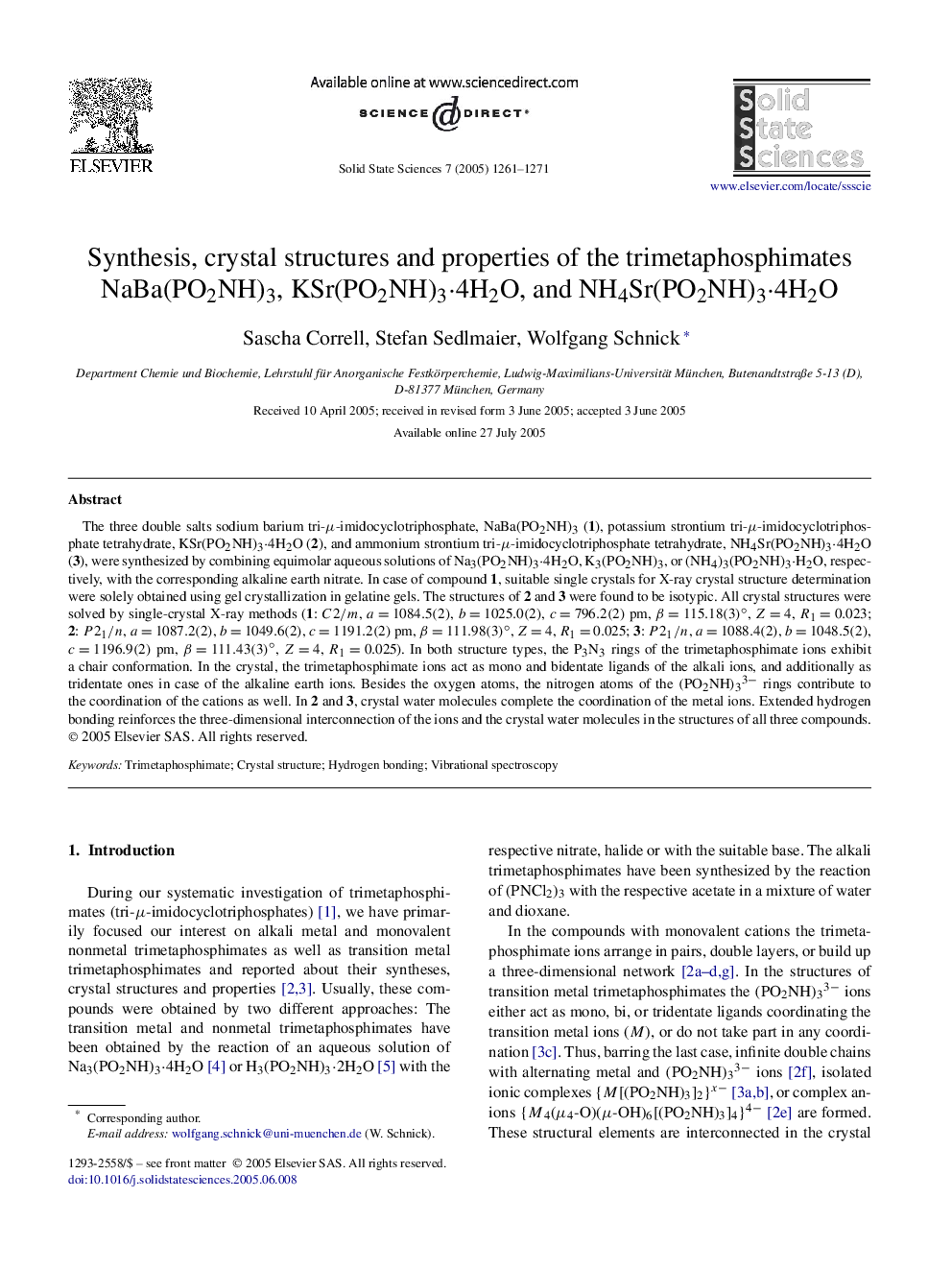| Article ID | Journal | Published Year | Pages | File Type |
|---|---|---|---|---|
| 10636808 | Solid State Sciences | 2005 | 11 Pages |
Abstract
The three double salts sodium barium tri-μ-imidocyclotriphosphate, NaBa(PO2NH)3 (1), potassium strontium tri-μ-imidocyclotriphosphate tetrahydrate, KSr(PO2NH)3â
4H2O (2), and ammonium strontium tri-μ-imidocyclotriphosphate tetrahydrate, NH4Sr(PO2NH)3â
4H2O (3), were synthesized by combining equimolar aqueous solutions of Na3(PO2NH)3â
4H2O, K3(PO2NH)3, or (NH4)3(PO2NH)3â
H2O, respectively, with the corresponding alkaline earth nitrate. In case of compound 1, suitable single crystals for X-ray crystal structure determination were solely obtained using gel crystallization in gelatine gels. The structures of 2 and 3 were found to be isotypic. All crystal structures were solved by single-crystal X-ray methods (1: C2/m, a=1084.5(2), b=1025.0(2), c=796.2(2)pm, β=115.18(3)°, Z=4, R1=0.023; 2: P21/n, a=1087.2(2), b=1049.6(2), c=1191.2(2)pm, β=111.98(3)°, Z=4, R1=0.025; 3: P21/n, a=1088.4(2), b=1048.5(2), c=1196.9(2)pm, β=111.43(3)°, Z=4, R1=0.025). In both structure types, the P3N3 rings of the trimetaphosphimate ions exhibit a chair conformation. In the crystal, the trimetaphosphimate ions act as mono and bidentate ligands of the alkali ions, and additionally as tridentate ones in case of the alkaline earth ions. Besides the oxygen atoms, the nitrogen atoms of the (PO2NH)33â rings contribute to the coordination of the cations as well. In 2 and 3, crystal water molecules complete the coordination of the metal ions. Extended hydrogen bonding reinforces the three-dimensional interconnection of the ions and the crystal water molecules in the structures of all three compounds.
Related Topics
Physical Sciences and Engineering
Materials Science
Ceramics and Composites
Authors
Sascha Correll, Stefan Sedlmaier, Wolfgang Schnick,
